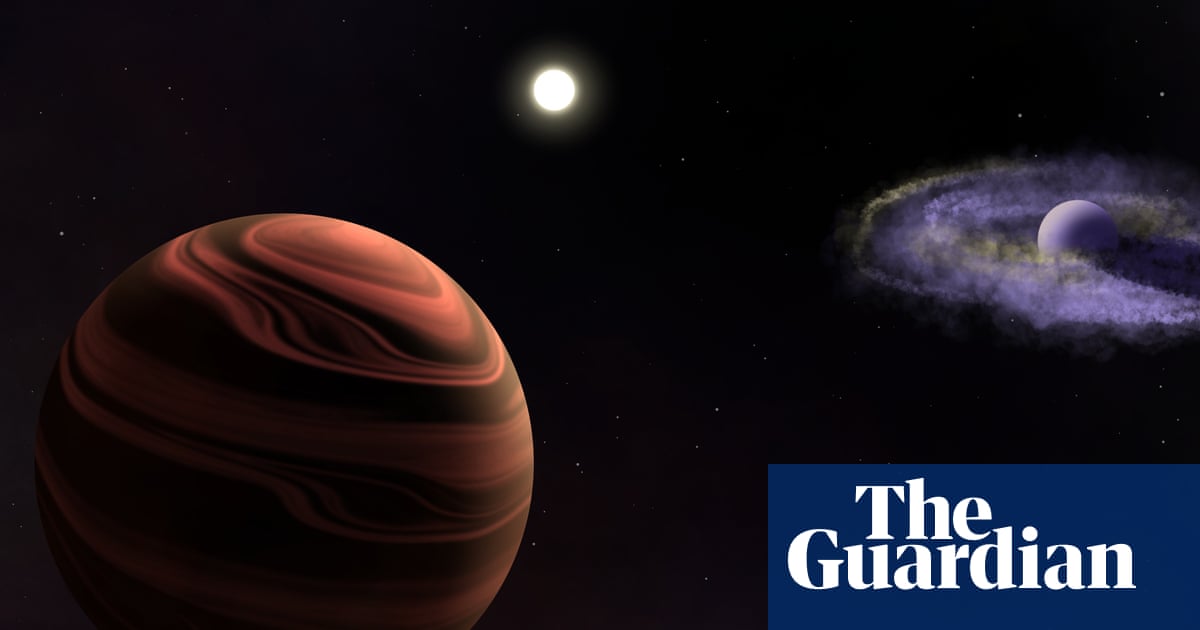Should humans ever venture to a particular planet that circles a sun-like star in the constellation of the fly, they would do well to keep an eye on the weather.
The thick slabs of cloud that blot the planet’s skies are mostly made from mineral dust, but astronomers suspect there may be iron in them, too, which would rain down on the world below when the clouds break.
Astronomers spotted the high-altitude clouds when they trained theJames Webb space telescope(JWST) on the young star system, which lies 307 light years away in the deep southern sky.
The star, YSES-1, is a newbie by cosmic standards, a mere 1m years old compared with the 4.6bn-year-old sun. The star is circled by two gas giants, both still forming and both larger than Jupiter, the biggest planet in the solar system.
Dr Kielan Hoch, an astrophysicist at theSpaceTelescope Science Institute in Baltimore, Maryland, said the planetary system’s youth made it a prime target for astronomers to learn more about the early evolution of planets around faraway stars.
“There’s a small handful of multiplanet systems that have been directly imaged,” Hoch said. “And they are a unique laboratory to test planet formation theories as they formed in the same environment.”
“Both planets are still forming, which is why they are still bright enough for us to detect,” she added. “The light we are seeing is from their formation as they begin to shrink and condense.”
When the team began their observations they were surprised to find both planets in the telescope’s field of view, giving them information on two worlds for the price of one. The outer planet, YSES-1c, is the smaller of the two worlds, and about six times the mass of Jupiter.
The telescope revealed high-altitude clouds in the planet’s atmosphere, but instead of being made from water vapour as on Earth, the clouds consist of magnesium silicate dust grains and perhaps some iron. “The iron would indeed precipitate out,” Hoch said.
The astronomers described the observations as the first direct detection of such clouds on a planet circling a sun-like star. Further data revealed a disc of material made up of trillions of tonnes of dust particles around the larger inner world, YSES-1b, about 14 times the mass of Jupiter. The findings werepublished in Nature.
Hoch said the disc around the inner planet was a “puzzle for formation theories” since both planets must have formed in the same environment. “Why did YSES-1b hold on to material around it while YSES-1c did not?” she said. An added mystery is why a 16m-year-old planet still has a disk of material swirling around it. Astronomers’ theories of planet formation suggest that any encircling dust should have settled after the first 5m years.
“We wouldn’t expect the planets to look so different from one another if they formed in the same protoplanetary disk,” Hoch said. “JWST is providing an immense amount of data to continue to refine models and improve our understanding.”
The $10bn telescope has transformed astronomy since itlaunchedin December 2021 from Europe’s Spaceport in French Guiana. The flagship mission has peered back tothe first galaxiesthat lit up the cosmos, spiedstrange new worlds, andwitnessed black holes colliding. It has even spotted tantalising, if controversial,hints of life beyond Earth.
